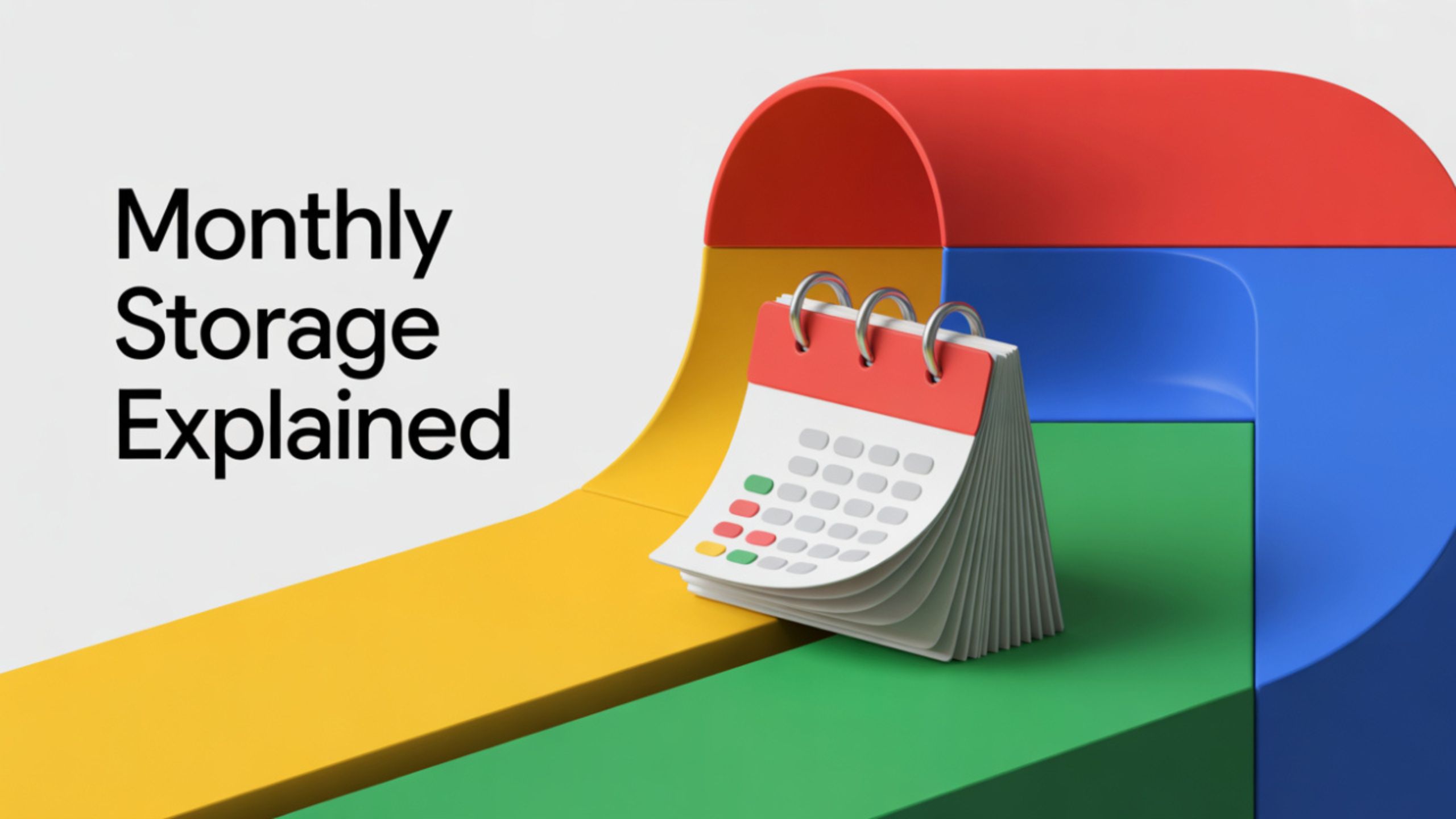Google One Storage Explained: Do You Get 200GB Added Every Month– If you’ve subscribed to a 200GB Google One plan, you’re likely wondering what that means: Does Google give you 200GB monthly? Does it stack up like a mobile data rollover? Or are you renting space? This comprehensive guide answers all those questions—and more. We’ll cover everything you need about Google One storage, subscription behaviour, plan limits, usage tips, and how Google handles monthly plans.
What Is Google One?
Google One is a cloud storage subscription service offered by Google. It replaces the old paid Google Drive plans and integrates storage across multiple services, including:
- Gmail
- Google Drive
- Google Photos
The primary idea behind Google One is simple:
You’re paying Google to rent additional cloud storage space for your Google account.
Understanding the 200GB/Month Plan
When subscribing to the 200GB/month plan, you’re subscribing to a fixed storage quota, not an accumulation model.
Here’s the key concept:
You’re renting access to 200GB of total storage, not adding 200GB monthly.
That means 200GB is your total storage limit as long as your subscription is active.
So, you don’t get 200GB added every month. Instead, your account remains at 200GB of total available storage. Your limit stays the same whether it’s day one or month six.
Why It Doesn’t Add Up Monthly
It’s easy to confuse subscription models with mobile data or loyalty rewards, where unused data might roll over into the next month.
But Google One works like a cloud rental model:
- Your storage space is capped at what you subscribe to (e.g., 200GB).
- Think of it as leasing a digital locker—you don’t get a bigger locker every month; you keep the same one.
This approach ensures consistency and simplifies how Google manages cloud capacity across billions of accounts.
What Happens If You Exceed the 200GB Limit?
If your files, emails, and photos exceed the 200GB limit, you will encounter:
- Upload restrictions in Google Drive
- Blocked email sending/receiving in Gmail
- No new images/videos can be backed up in Google Photos
Google doesn’t delete your data immediately, but it will prompt you to either:
- Upgrade to a higher plan
- Free up space by deleting content
Can You Stack Google One Subscriptions?
No, Google One does not support stacking like prepaid mobile recharge cards.
Example:
You cannot buy 200GB today, then again next month, and expect to have 400 GB.
Instead, you can upgrade to a higher-tier plan like:
- 2TB Plan
- 5TB Plan
- Or even 10TB+
Monthly Plan vs Annual Plan: Is There a Difference in Storage?
Whether you subscribe to the monthly or annual plan, your storage capacity remains unchanged. The only difference is:
- Monthly plans are billed every month.
- Annual plans often come with a discount—you save more over 12 months.
But again, storage doesn’t accumulate or increase—200GB is just the size of your digital locker, no matter how you pay.
What Is Included in Google One Storage?
Your Google One storage is shared across three services:
- Google Drive – For files, PDFs, folders, and documents.
- Gmail – Every email and attachment you receive counts.
- Google Photos – Full-resolution photos and videos.
This means your actual storage can fill up quickly, especially if you back up photos in Original quality rather than Storage saver mode.
Tips to Maximise Your 200GB Google One Plan
Here’s how to make the most of your plan:
- Use “Storage Saver” mode in Google Photos.
- Regularly delete old emails and attachments.
- Remove duplicate files or unused Google Docs from Drive.
- Use the Google One app to track space usage easily.
- Set up shared storage for family (up to 5 family members can share a plan).
Is Google One Worth It for 200GB?
Let’s break it down:
Pros:
- Affordable at ₹210/month (INR) or $2.99/month (USD)
- Great for photo and document backups
- Family sharing makes it cost-effective
- Seamless sync across devices
Cons:
- Storage doesn’t roll over or accumulate
- Advanced users may need more than 200GB
- Some feel it should offer data rollover or stacking
If you use Google Photos frequently or rely on Gmail for heavy attachments, the 200GB plan hits a sweet spot between affordability and usability.
Common Myths About Google One 200GB Storage
Let’s bust a few myths:
- ❌ “I’ll get 200GB more every month.”
- → False. It’s a flat 200GB limit.
- ❌ “Unused storage rolls over.”
- → Nope. It doesn’t work like mobile data.
- ❌ “I can combine two accounts to double space.”
- → No. Each account has a separate subscription.
What Happens If You Cancel the Subscription?
When you cancel your Google One subscription, here’s what happens:
- You lose access to premium features like support and family sharing.
- Your storage returns to the default 15GB free limit.
- If you’re over 15GB, Google won’t delete your data immediately, but:
- You can’t upload new content.
- Gmail will stop working correctly.
- You won’t be able to back up photos.
Make sure to either download and back up your data or clean up files before cancelling.
Google One Alternatives for Storage
While Google One is convenient, you might also consider:
ServiceFreeStorage Paid Plans Start At
Dropbox 2GB $9.99/month (2TB)
Microsoft OneDrive 5GB $1.99/month (100GB)
iCloud 5GB $0.99/month (50GB)
Mega 20GB $5.86/month (400GB)
Each platform has strengths, but Google One’s tight integration with Android and Gmail makes it a popular favourite.
Wrap-Up: What You Get with the Google One 200GB Plan
To recap:
The 200GB/month plan means you’re renting 200GB of stor, ge—not receiving 200GB fresh each month. It’s a fixed, ongoing quota that allows you to store photos, files, and emails in the Google ecosystem.
If you have growing digital needs—whether for backups, media, or family sharing—then the 200GB plan offers fantastic value at a modest price.
However, it’s essential to manage your space wisely and not assume it accumulates over time. Now that you know exactly how it works, you can use your storage smarter—and avoid surprises when you hit that limit.
Want to upgrade your digital life even more? Explore Google One’s advanced plans or use storage cleaning tools in your account to stay organised and clutter-free.

Selva Ganesh is a Computer Science Engineer, Android Developer, and Tech Enthusiast. As the Chief Editor of this blog, he brings over 10 years of experience in Android development and professional blogging. He has completed multiple courses under the Google News Initiative, enhancing his expertise in digital journalism and content accuracy. Selva also manages Android Infotech, a globally recognized platform known for its practical, solution-focused articles that help users resolve Android-related issues.




Thanks for the detailed post. Very helpful for non-tech users like me.
So it’s not cumulative storage per month—makes sense now.
This answered my questions about rollover. Nicely detailed post.
This article helped me realize I was using the plan incorrectly.
Great explanation! I finally understand I’m just renting the space.
This article helped me realize I was using the plan incorrectly.
Simple and informative—I now understand my Google One subscription.
Simple and informative—I now understand my Google One subscription.
I always wondered how the 200GB plan worked. Thanks for the clarification!
I always wondered how the 200GB plan worked. Thanks for the clarification!
Glad to know the storage doesn’t stack. Was thinking of upgrading.
This answered my questions about rollover. Nicely detailed post.
So it’s not cumulative storage per month—makes sense now.
Glad to know the storage doesn’t stack. Was thinking of upgrading.
Glad to know the storage doesn’t stack. Was thinking of upgrading.
This answered my questions about rollover. Nicely detailed post.
This answered my questions about rollover. Nicely detailed post.
This answered my questions about rollover. Nicely detailed post.
Simple and informative—I now understand my Google One subscription.
Great explanation! I finally understand I’m just renting the space.
Glad to know the storage doesn’t stack. Was thinking of upgrading.
Thanks for the detailed post. Very helpful for non-tech users like me.
Glad to know the storage doesn’t stack. Was thinking of upgrading.
I always wondered how the 200GB plan worked. Thanks for the clarification!
This article helped me realize I was using the plan incorrectly.
So it’s not cumulative storage per month—makes sense now.
I always wondered how the 200GB plan worked. Thanks for the clarification!
Simple and informative—I now understand my Google One subscription.
Great explanation! I finally understand I’m just renting the space.
Perfectly broken down! Google should link this from their help page.
This answered my questions about rollover. Nicely detailed post.
Glad to know the storage doesn’t stack. Was thinking of upgrading.
I always wondered how the 200GB plan worked. Thanks for the clarification!
This article helped me realize I was using the plan incorrectly.
This answered my questions about rollover. Nicely detailed post.
I always wondered how the 200GB plan worked. Thanks for the clarification!
This article helped me realize I was using the plan incorrectly.
People always confuse this with monthly add-ons—this clears it up.
This answered my questions about rollover. Nicely detailed post.
Thanks for the detailed post. Very helpful for non-tech users like me.
Simple and informative—I now understand my Google One subscription.
Glad to know the storage doesn’t stack. Was thinking of upgrading.
Great explanation! I finally understand I’m just renting the space.
So it’s not cumulative storage per month—makes sense now.
So it’s not cumulative storage per month—makes sense now.
This article helped me realize I was using the plan incorrectly.
Glad to know the storage doesn’t stack. Was thinking of upgrading.
This answered my questions about rollover. Nicely detailed post.
Perfectly broken down! Google should link this from their help page.
Great explanation! I finally understand I’m just renting the space.
People always confuse this with monthly add-ons—this clears it up.
Simple and informative—I now understand my Google One subscription.
Perfectly broken down! Google should link this from their help page.
Great explanation! I finally understand I’m just renting the space.
So it’s not cumulative storage per month—makes sense now.
Perfectly broken down! Google should link this from their help page.
People always confuse this with monthly add-ons—this clears it up.
Thanks for the detailed post. Very helpful for non-tech users like me.
Glad to know the storage doesn’t stack. Was thinking of upgrading.
Glad to know the storage doesn’t stack. Was thinking of upgrading.
So it’s not cumulative storage per month—makes sense now.
Glad to know the storage doesn’t stack. Was thinking of upgrading.